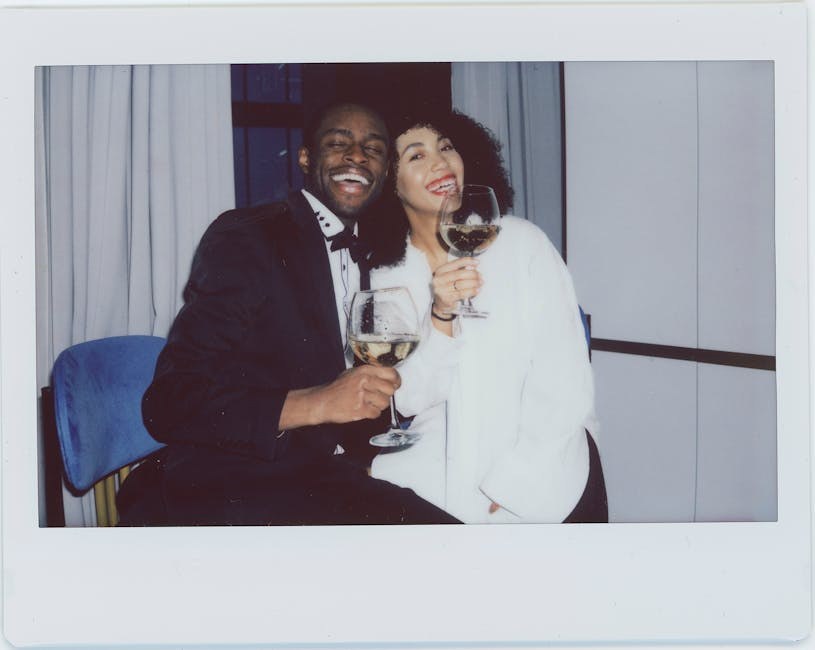Every couple wonders at some point whether they truly fit – not just in the thrilling rush of attraction but in the quiet, ordinary hours that fill most days. That fit has a name: relationship compatibility. It isn’t a single switch you flip on or off; it’s a living pattern made of values, habits, preferences, boundaries, and mutual care. When relationship compatibility is strong, daily life feels easier, conflicts feel solvable, and intimacy deepens. When it’s shaky, even small frictions can echo. The good news is that compatibility isn’t fixed; you can understand it, measure it, and strengthen it together.
What “compatible” really means
Think of compatibility as the overall alignment of how you move through life – what you believe, what you want, and how you behave under pressure. Two people might sync in entertainment tastes but clash over spending or free time. That’s normal. Relationship compatibility isn’t about being identical; it’s about being workable. You can share faith and politics yet disagree about how much attention the relationship needs after work. Or you can differ on spiritual practices and still thrive because you respect each other’s meaning-making and find common ground in daily routines.
Compatibility shows up across domains: intimacy and sexual pace, money habits, communication style, views on family and children, boundaries with extended relatives, and how you respond to stress. In each area, ask a simple question: can we understand each other’s position, and can we cooperate without one of us feeling erased? When the answer is often “yes,” relationship compatibility grows sturdier.

Chemistry and compatibility – different but connected
Chemistry can be electric – the spark that pulls you toward someone. Compatibility is the structure that keeps you there. Early on, sexual attraction might drown out everything else; later, the day-to-day rhythm demands more. You need emotional, intellectual, and practical harmony to carry the relationship through the inevitable lulls. With high chemistry and thin compatibility, friction builds once novelty fades. With modest chemistry and solid relationship compatibility, affection often deepens because you can count on each other in real life.
None of this means physical desire isn’t important. It is. It just can’t do all the heavy lifting. What holds over time is a blend of warmth, understanding, and shared problem-solving – the durable parts of relationship compatibility that make passion feel safe rather than volatile.
Why compatibility matters
People say “opposites attract,” and there’s some truth – complementary traits can balance. A decisive partner might pair well with someone flexible, for instance. But when differences collide in crucial areas, the attraction can’t compensate. An extrovert who needs nightlife and a homebody who wants quiet evenings can absolutely love each other – yet they still need agreements that protect both needs. Without the ballast of relationship compatibility, misunderstandings multiply, and small resentments harden into distance.

Signs you and your partner align
Below is a practical lens for noticing where you sync. You don’t need to “score” perfectly; you need enough overlap – and a willingness to keep building relationship compatibility where it matters most.
You move at a similar pace. Energy levels and lifestyle choices don’t have to match exactly, but your rhythms complement each other. If one of you works long hours, the other understands why and how to stay connected. This signals everyday relationship compatibility around time and priorities.
You can talk about money without panic. Spending, saving, and sharing are recurring decisions – not one-off events. You can discuss budgets, goals, and boundaries without shaming each other. That steady dialogue is a cornerstone of relationship compatibility.

Your intimacy needs feel seen. Desire fluctuates, and preferences evolve. What matters is that you talk openly, pace yourselves with care, and find mutual pleasure. You collaborate – not compete – which strengthens practical relationship compatibility in the bedroom.
Communication is candid and kind. You can say the hard thing without turning each other into enemies. You ask clarifying questions, own your part, and repair after missteps. This is the backbone of sustainable relationship compatibility.
You respect each other’s beliefs. Different religions or spiritual practices don’t doom a couple. What matters is curiosity, boundaries, and realistic plans for holidays, rituals, and (if relevant) child-rearing. Respect here keeps relationship compatibility from fraying under pressure.
Your circles cheer you on. Support from friends and family isn’t everything, but it reduces headwinds. If your communities celebrate the match – or at least treat it with goodwill – daily life gets lighter, and relationship compatibility has room to grow.
Your health habits don’t collide. You don’t have to share every smoothie recipe or workout, but values around food, alcohol, movement, and rest shouldn’t constantly clash. When lifestyle choices align, relationship compatibility feels less like compromise and more like teamwork.
You protect “me time.” Independence isn’t distance – it’s oxygen. Hobbies, friendships, and quiet rituals keep you both whole. Secure partners encourage this, which paradoxically increases relationship compatibility because neither person feels trapped.
Arguments aim at understanding. Disagreements are inevitable. What predicts longevity is how you fight – fair rules, temporary timeouts, and an intent to repair. If conflict ends with clarity rather than punishment, you’re practicing everyday relationship compatibility.
Quirks are welcomed, not weaponized. Everyone has habits that could annoy. In compatible pairs, quirks become inside jokes or simple requests for adjustment – not evidence for character assassination. That stance protects relationship compatibility from petty erosion.
You’re comfortable being utterly human. There’s a level of ease with bodily realities – sick days, morning breath, bathroom logistics – that signals deep safety. When dignity remains intact, intimacy feels relaxed, and relationship compatibility gains texture.
You hold distinct opinions – and respect them. Agreement isn’t the goal; listening is. You can debate politics or art without humiliation or scorekeeping. Mature curiosity keeps relationship compatibility from becoming conformity.
Laughter lives in your home. A shared sense of humor softens hard moments. If you can lighten tension together – without turning feelings into a punchline – you renew relationship compatibility in the face of stress.
You share a few genuine interests. One or two overlapping passions – hiking, board games, cooking – create rituals that anchor connection. These touchpoints give relationship compatibility a playful place to breathe.
Your ambitions point in compatible directions. Maybe you’re both growth-oriented, or you both cherish a slower life. Either way, your aims don’t chronically undercut each other. That alignment stabilizes long-term relationship compatibility.
You understand cultural context. Backgrounds shape expectations. You don’t have to mirror each other’s heritage, but you do need literacy about customs, family roles, and norms. Naming differences – and honoring them – protects relationship compatibility.
You don’t vanish in hard seasons. Tough stretches reveal character. If you tackle grief, job stress, or illness side by side – dividing tasks, offering comfort, asking for help – you’re demonstrating resilient relationship compatibility.
Love feels secure, not conditional. You disagree sometimes, but you don’t doubt the bond after every conflict. The baseline is warmth and commitment – a steady floor where relationship compatibility can keep evolving.
You can share the messy truths. Honesty about fears, finances, past mistakes, and hopes signals trust. Secrets that need protection – not secrecy – are held with care. That transparency nourishes relationship compatibility.
Silence is easy. You can read in the same room, drive without chatter, or cook quietly together without anxiety. The absence of forced conversation is a small but potent sign of steady relationship compatibility.
Long-term togetherness still feels new. Familiarity doesn’t equal boredom. You surprise each other – small notes, new recipes, fresh questions – which keeps relationship compatibility lively rather than stale.
Attraction endures. Physical pull ebbs and flows, but a spark remains. You still reach for each other’s hands, notice each other’s beauty, and nurture touch – all of which supports embodied relationship compatibility.
You can be fully yourself. No masks, no eggshells. You show the goofy, tender, ambitious, and vulnerable parts without fear of ridicule. Authenticity is both a sign and a fuel of relationship compatibility.
You picture a shared future in realistic detail. It’s not just the wedding or the dream trip – it’s chores, caregiving, traditions, and the map of your weeks. That concreteness grounds relationship compatibility in daily life.
You don’t treat your partner as a renovation project. Growth is welcome; control is not. You can ask for changes that protect the relationship, but you don’t try to rewrite personality. This boundary keeps relationship compatibility cooperative rather than coercive.
You bring out each other’s best. Your presence makes courage easier. You encourage applications, rest, therapy, or creative risks – whatever helps the other flourish. Mutual empowerment is the heartbeat of relationship compatibility.
Ways to strengthen compatibility
Even couples who feel aligned hit snags. Compatibility improves with practice – not perfection. Use these collaborative moves to reinforce relationship compatibility where it matters most.
Start with an honest conversation. Name the domains that feel smooth and the ones that chafe. Speak from your experience – “I feel overlooked when…” – rather than blaming. Curiosity opens the door to better relationship compatibility.
Decide what can change – and what can’t. Some behaviors are flexible; some are part of identity. If tidiness is vital to one partner and freedom from constant cleaning is vital to the other, negotiate systems that protect both needs. Explicit agreements strengthen practical relationship compatibility.
Share the burden of compromise. One person cannot always bend. You take turns shifting routines, budgets, or plans so that neither person keeps the scoreboard. Balanced compromise is a skill that keeps relationship compatibility fair.
Check in regularly. Habits drift. Schedule brief check-ins – weekly or monthly – to notice progress, reset expectations, and celebrate wins. These small audits keep relationship compatibility tuned instead of leaving it to chance.
Can an incompatible pairing still work?
Two people can stay together for years even if many needs collide. Longevity, however, isn’t the same as fulfillment. A useful question is: how much pain does the mismatch create, and how willing are we to redesign our life around it? If neither of you is distressed, the relationship can be stable. If one or both feel consistently unseen, the cost will feel too high. The outcome depends less on “perfect fit” and more on the effort you both invest in restoring relationship compatibility when it slips.
Finding someone who fits
If your current match doesn’t feel right – or you’re single and discerning – you can approach dating with more clarity. Doing so increases the odds that early chemistry grows into sturdy relationship compatibility.
Know yourself first. Map your values, nonnegotiables, and stress patterns. The clearer you are about your shape, the easier it is to test relationship compatibility with someone new.
Describe your ideal partner – deeply, not superficially. Include worldview, intimacy pace, social energy, money philosophy, and ambitions. This kind of sketch helps you spot early signs of relationship compatibility instead of chasing only spark.
List your deal-breakers. Decide what you cannot live with – chronic dishonesty, substance use, or incompatible family plans, for example. Clear boundaries prevent you from bargaining away relationship compatibility in the first rush of attraction.
Rank your priorities. No one meets every criterion. Decide what matters most – kindness over income, reliability over spontaneity, or vice versa. Prioritizing keeps relationship compatibility focused on your real life rather than an idealized checklist.
Ask useful questions early and kindly. On apps or first dates, weave in light, genuine questions about weekends, money comfort, conflict, and long-term hopes. You’re not interrogating; you’re listening for the seeds of relationship compatibility.
Compatibility isn’t magic – it’s maintenance. It grows whenever you clarify needs, tell the truth, and treat each other with steady respect. If you protect the rituals that connect you, repair quickly after conflict, and keep choosing the partnership on ordinary Tuesdays, you’ll keep strengthening relationship compatibility that lasts.